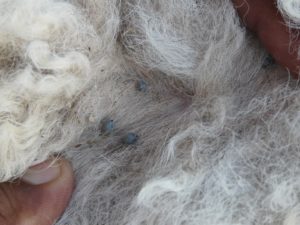
Tick-borne pathogens are emerging and re-emerging worldwide. They are transmitted to animals and humans through tick bites. These arthropods act as a vector for bacterial, viral or protozoal pathogens causing a variety of diseases of both veterinary and public health importance, one of which is anaplasmosis.
Anaplasmosis has a global distribution and is caused by bacteria of the genus Anaplasma. The best known and most widespread species include: Anaplasma phagocytophilum, A. marginale and A. ovis. With the exception of A. phagocytophilum, which has a wide host range including humans, other species are generally host-specific.
This study was a part of a Franco-Moroccan project (PRAD 13-06 Egide N°28027YM) between the ‘Institut Agronomique et Vétérinaire Hassan II’ (IAV Hassan II); the ‘Ecoles Nationales Vétérinaires’ d’Alfort (ENVA) and Toulouse (ENVT), initially focusing on screening ruminant and camel samples from Morocco for A. phagocytophilum. Despite the positive results we obtained, the molecular fingerprint was not consistent with A. phagocytophilum, suggesting that a novel Anaplasmatacea species might be involved.

Camel keepers and veterinarians in Southern Morocco have, over the course of the last few years, reported outbreaks of a new syndrome in camels; clinically the presentation is similar to trypanosomiasis but also to granulocytic anaplasmosis. These two diseases were however neither diagnosed nor reported in this region during these outbreaks. Four camels, found to be positive for anaplasmosis, showed clinical signs of this novel condition.
This presence of a novel pathogen raises several issues: Could this novel clinical syndrome be caused by the circulation in the camel population of the new pathogen characterised in this study? Is this pathogen transmissible to humans and other animal hosts? What is the mode of the transmission of this pathogen and what tick vector is involved? Considering that other vectors of Trypanosoma evansi such as biting flies (stomoxys and tabanids) are abundant in the region and are also capable of mechanical transmission of anaplasmosis, could they be implicated in the transmission?
Further studies are required to address these questions. We believe that the epidemiological profile of this novel pathogen should be monitored as part of a ‘better’ surveillance system as there is evidence to suggest that we are at the beginning of the emergence of this disease and its potential impact remains up to now uncertain.
Traditionally, diagnosis of camel anaplasmosis has relied on microscopy of blood smears or serology. Whilst these techniques can confirm the presence of Anaplasma, they cannot discriminate between species as molecular methods can do.
Our molecular phylogenetic analysis showed the bacterium in our camel samples was identical to the one previously described in camels in Saudi Arabia. As our phylogenetic analysis was carried out on a limited part of the genome, we cannot ascertain that the strain in camel samples from Morocco is ‘Candidatus Anaplasma camelii’, especially because the Anaplasma infection of our camels is associated with symptoms contrary to what has been reported by Bastos et al (2015).
Comments